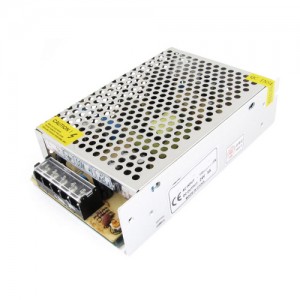Get The Best Results From Your Low Voltage LED Lighting
Posted by Amit Soni on 27th Jul 2012

If you're running a low-voltage (12 volt) lighting system in your home or business premises, you can save money and significantly lower your carbon emissions by switching to low-voltage LED light bulbs such as MR16 or MR11s.
The MR16 LED Spotlight Bulb for example, requires just 4 watts of electricity to produce 300 lumens of brightness. This is the equivalent of a 50 watt traditional halogen spotlight bulb, meaning that it will save you more than 90% on your electricity bill by switching to LED.
However, before you make the change, you’ll first need to check the compatibility of your existing transformers.
In low-voltage lighting, a transformer is a unit that effectively "steps down" the mains voltage from 240 volts to a more usable 12 volts.
Standard transformers have a minimum load capacity, which is usually around 20 watts. Due to the fact that, as already stated, LEDs require such a tiny amount of power in comparison with old-school bulbs, they often fall short of this minimum requirement and will therefore fail to work effectively.
Using your LED bulbs with a standard transformer is, therefore, not a viable option and can have a number of detrimental effects. Not only will it adversely affect their performance, it will also shorten their otherwise considerable life span.
This is definitely not something you want to happen because, aside from energy-efficiency, longevity is one of LED lighting’s most attractive properties.
With an average 50,000 hour life-expectancy, LED bulbs will easily outlast those of both incandescent and fluorescent bulbs, and means they’ll still be providing you with illumination in 17 years’ time.
To ensure the longevity of your bulbs, we recommend upgrading to an LED Driver. LED drivers have no minimum load, so can be used to power individual and multiple LED bulbs without any difficulty.
There are two types of LED driver available, they being “constant current” and “constant voltage”. When switching from your existing model to an LED driver, it’s important to work out which you require.
- Constant Current Drivers should be used to power an individual bulb, or several bulbs in succession.
- Constant Voltage Drivers should be used when running numerous bulbs in parallel.
As upgrading to LED drivers can be quite expensive, particularly if you have a large number, it can be preferable to seek a more cost-effective solution.
One option is to exchange your low-voltage fittings for those that are mains voltage GU10-compatible. This involves removing the fitting and transformer and installing a GU10 Lamp Holder directly to the mains power supply.
Moreover, as GU10 LED bulbs have an integral driver, you won’t need to worry about compatibility.
So, if you have low-voltage lighting and want to change to LED, don’t forget to check your transformers. This could save you a lot of hassle and will ensure you get the most out of your LED bulbs.
Remember, low-voltage is not synonymous with low energy. Energy is measured in watts, and only by switching your light sources completely to LED can you guarantee to lower your energy consumption and save money on your electricity bill.
Should you require any assistance or LED light-related advice, give one of our friendly and professional customer service advisors a call on 0116 321 4120 or send an e-mail enquiry to cs@wled.co.uk.
You’re also very welcome to ask a question or leave a comment on both our Facebook and Twitter pages.





